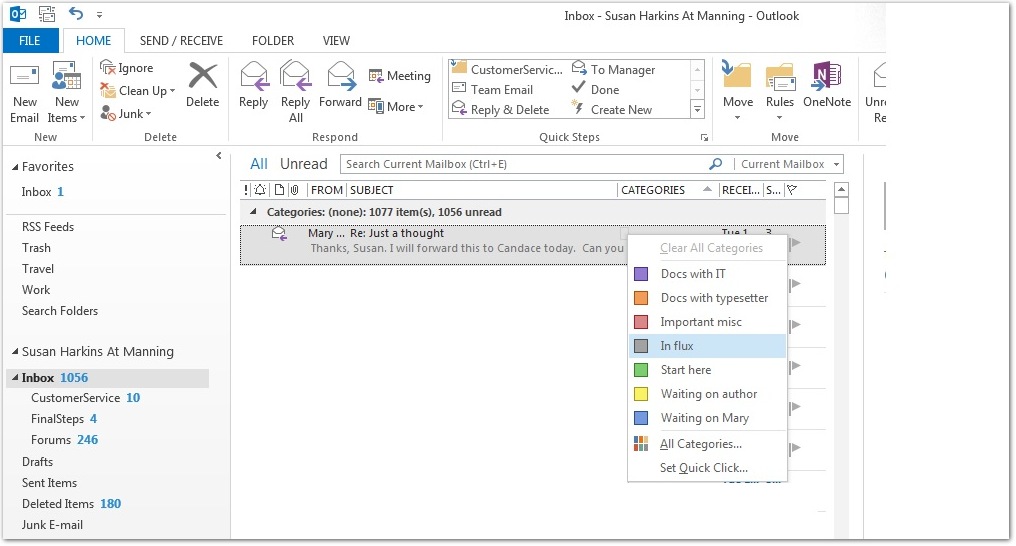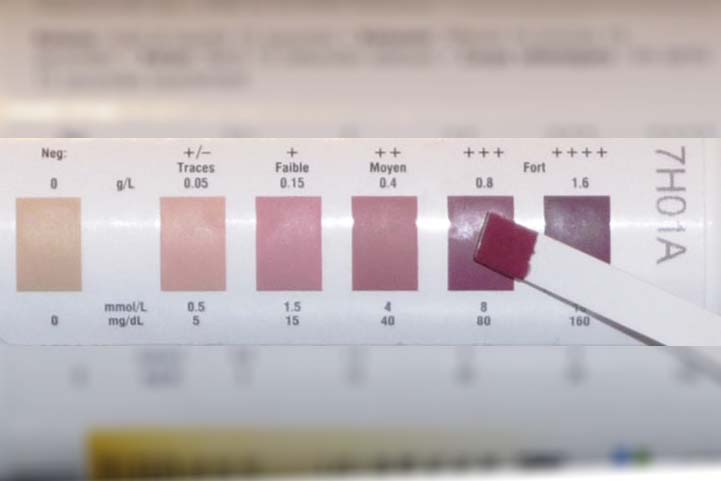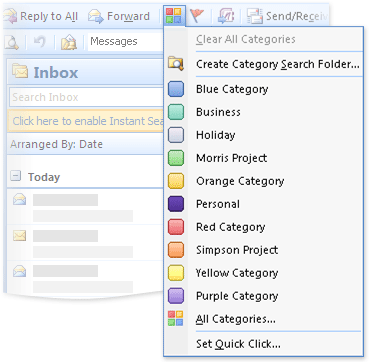What Do The Colors In Outlook Email Mean
- Outlook Color Coding Emails Outlook 2016
- Outlook 2016 Color Code Emails By Sender
- What Do The Colors Mean In Outlook Mail
This is about the new yellow highlighting on flagged emails in Windows Outlook in Office 365.
You can Color Code Emails in Outlook as an easy way to use visual elements to highlight messages in your Inbox. This is especially useful to help to quickly identify specific messages that meet specific criteria. Microsoft Outlook provides a new feature in versions 2000 and forward that allows you to color-code items that meet certain criteria. Using this feature you can identify a set of items without having to group or sort them. In fact, Outlook does it all for you! First you have to assign a common Category code to each contact you wish to assign to a color group, and then you can apply a color to. Color categories allow you to easily identify and group associated items in Microsoft Outlook. Assign a color category to a group of interrelated items—such as notes, contacts, appointments, and email messages—so that you can quickly track and organize them. You can also assign more than one color category to items. Use the colors that match your brand and don’t go overboard. Two to three main colors will be all you need to make an email pop. Be sure to match the colors in your emails with those found in your logo and on your website with tools like Color Cop for PC users, or Digital Color Meter for Macs, which allow you to pull the RGB or Hex value of the colors on your website or in your logo.
First, here is how you turn it off if you don’t like it (and how to turn it on if you don’t have it and want it):
https://www.michaellinenberger.com/blog/option-to-turn-off-flagged-mail-highlighting-added/
And here are more details:
As I have mentioned in a previous post, the new versions of Windows of Outlook that are rolling out to the monthly Office Insiders group in Microsoft Office 365 are pretty darn good. You might have to activate the Coming Soon switch to see them, but the things I’ve mentioned so far that I really like are:
- The Simplified Ribbon option (Excellent!)
- Slightly more space between messages in the Inbox (Nice)
- And slightly more vertical space between tasks in the To-Do Bar task list (Very Nice)

Whoever in Microsoft is managing these new changes, I’d like to take you out to lunch! Unlike changes in years past, each and every one of these changes, I feel, makes desktop Outlook a better product without limiting previous features. Bravo!
One of the new features rolling out in recent Insider Coming Soon versions of Outlook is one I’d like to highlight now. It is this: Flagged mail now gets a yellow highlight.
Here is what I am talking about. Look at the image below. Notice the 4th item down (I added a red box to show it better). See how it is light-yellow in color? That is because the flag is set at its right edge.
And that’s the new feature. In the latest copies of Insider Outlook, when you set a flag on an email, the entire email turns yellow in the List view.
It’s funny, because about six months ago (before this change) I had made note to myself that it was too bad flagged mail did not stand out more. The red flag to the right was often overlooked as I moved quickly through my mail list. Now those items stand out much better. Seriously, it is almost as if Microsoft read my mind with this new feature.
Proper Use of the Flag
As a review, for my 1MTD and MYN users, I recommend you use that flag sparingly. My recommendation for flags is this: only use the flag for deferred replies—for emails you intend to reply to but can’t right now. Mark them with a flag, and don’t use the flag for anything else. And try to reply to all emails marked this way by the end of the day, and remove the flag after you reply. That’s my recommendation.

And now, Microsoft has made it easier to see these items. Thank you!
Michael
Obviously, if you ask this question to a group of people, you will get a variety (or spectrum!) of answers. Colors affect people in different ways, and much research has been published to investigate what emotional response different colors provoke.
Effective communicators know that the first rule for an effective presentation is to KNOW YOUR AUDIENCE and structure your content for them when preparing it. Vocabulary, tone, length of material, and style are all adapted, as necessary, for each particular and unique audience.
But how important is color when designing HTML for email or website audiences? Isn’t content all that matters?
Does it really matter what color I use in my HTML email newsletters or websites or landing pages on my new product page?
According to Psychology About.com, psychologists estimate that the response to color can account for up to 60% of the acceptance or rejection of a product or service. This suggests that modern communicators who use dynamic design elements and formatting for their email newsletters and landing pages should consider what colors are most appropriate (and effective) for their particular audience. When considering color in the context of psychology and how it might influence your audience, you should take into account the cultural, gender, and age difference of your audience.
Cultural Differences
Because we are often communicating with a global audience when we send email or design a website, it is important to understand cultural differences and the significance and interpretations that certain colors have in different parts of the world.
As an example; when I was living in Italy, a co-worker’s mother took ill and was sent to hospital. As a good US Air Force representative, I immediately started requesting donations from the office so that we could send her mother flowers and a get well card. Shortly into my fund-raising efforts, an Italian colleague approached me (thankfully, before I delivered the bouquet!). He said:
“Mr. Tom, In Italy, we never give an even number of flowers; and please do not buy Chrysanthemums as they are only given at funerals.”
Imagine if I had sent the poor lady a dozen Chrysanthemums!
The cultural significance of color is also important to consider when communicating via email or on a website. Here are some examples of how colors have different significance between just two cultures.
| Red | Yellow | Green | Black | White | |
| China | Good luck, celebration, happiness | Nourishing | Exorcism, Adultery | Youth, the color for young boys | Funerals |
| United States | Love, passion, danger, stop, rage | Hope, hazards, coward-ness | Spring, go, St. Patrick’s Day, Christmas | Funerals, death, antagonists, Halloween | Weddings, purity |
Okay, so GroupMail is currently used in over 160 countries around the world. I wonder how many customers I inadvertently insulted with the color scheme of my last newsletter? Doh!

Here is more information about color symbolism by culture.
There is also a quick color guide that you can refer to for a quick reference for what feelings different colors might illicit (in western culture.)
Gender Differences
Studies suggest that men and women respond to color differently. In The Meaning of Color for Gender, Natalia Khouw writes,
“Another study examined the appropriateness of colors used on the walls of a simulated domestic interior furnished in one of three styles; Georgian, Art Nouveau and Modern. Whitfield (1984) reported that internal consistency among women is higher than for men. When the study was broadened to include marital status, married women achieve significantly more internal consistency in each condition of the three styles than did the men.
More recently, Radeloff (1990) has found that women were more likely than men to have a favorite color. In expressing the preferences for light versus dark colors, there was [sic] no significant differences between men and women; however, in expressing the preference for bright and soft colors, there was a difference, with women preferring soft colors and men preferring bright ones.”
I recommend that you read Ms. Khouw’s full paper, The Meaning of Color for Gender
Age Differences
Even within cultural and gender groups, response to color can shift within age groups. Younger children will tend to prefer more active, engaging colors than adults. Dull, greyish or black and white shades appear too business-like and formal. If you take the time to look at childrens TV shows, magazines, and Internet sites, you can get a good idea of what colors attract children.

Outlook Color Coding Emails Outlook 2016
Jennifer Kyrnin, from webdesign.about.com says that “Young children tend to prefer brighter, more solid colors, while adults tend to prefer more subdued colors. If you’re writing to an audience of children and you’re using muted pastels and shades of grey, their parents might like it, but the kids will be long gone before the page finishes loading.” She also discusses differences in color significance within economic classes and over time through trends.
Outlook 2016 Color Code Emails By Sender
As modern communicators, color certainly enhances those messages that appeared somewhat dull in the black and white era not too many years ago. Color can bring an email or website to life. However, if you don’t consider the various cultural, gender and age interpretations, color can also create a reaction to your message that may be counterproductive and undesired.
What Do The Colors Mean In Outlook Mail
So the next time you design an HTML email template, send an email newsletter or design a landing page for your website, give some thought about the colors you use, and don’t be afraid to experiment, using the research available here as a guide.
